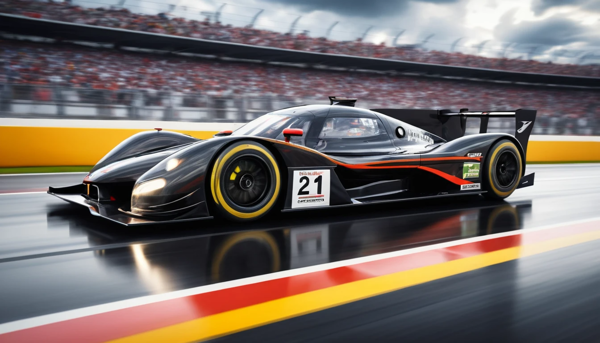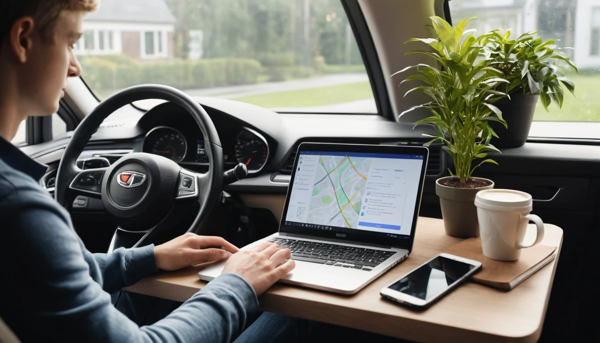Advanced driving techniques for racing explained simply. Learn pro tips, boost lap times, and master track control like a champion.
Advanced Driving Techniques for Racing
🏁 Why Advanced Driving Skills Matter
Ever wondered why some racers seem untouchable on the track? It’s not magic—it’s technique. Advanced driving skills turn good drivers into great ones. They let you brake later, corner faster, and accelerate earlier.
These techniques also keep you safe at high speeds. In racing, control is everything. Every second gained is a competitive edge. And every mistake? It costs more than just time—it can cost the race.
🚦 The Core of Advanced Driving Techniques
At its heart, advanced driving is about precision and consistency. You’re aiming for the fastest lap without pushing beyond your limits. This means blending throttle, brakes, and steering into one smooth motion.
It’s not about being aggressive; it’s about being efficient. Professional drivers spend years fine-tuning these skills. Yet, with the right approach, you can start improving today.
🌀 Perfecting Racing Lines
Your racing line determines your speed and control. A good line reduces steering input and maximizes acceleration points. Always look ahead to plan your entry, apex, and exit.
Think of the track as a puzzle—every corner connects to the next. Missing one apex affects the whole sequence. Focus on smooth transitions between straights and curves. That’s where lap time melts away.
Custom Table: Common Racing Line Mistakes and Fixes
| Mistake | Effect | Fix |
|---|---|---|
| Turning too early | Understeer, slower exit speed | Brake later, look through the corner |
| Missing apex | Longer travel distance | Adjust entry speed, correct steering |
| Oversteering mid-corner | Loss of grip | Smooth throttle application |
🚗 Braking Mastery for Racing
Braking is not just slowing down—it’s a weapon. Learn threshold braking to use maximum grip without locking wheels. Brake in a straight line before turning.
This keeps weight transfer predictable. Trail braking, used in advanced driving, lets you brake into the corner while controlling rotation. But it takes finesse—too much and you’ll spin.
⚡ The Art of Acceleration
Smooth acceleration out of corners is key. Flooring it too soon spins the tires. Too late, and you lose momentum.
Advanced drivers balance throttle to maintain grip and stability. Listen to your tires—they’ll tell you when they’re at the limit. Combine this with the right gear selection for peak torque.
🔄 Mastering Weight Transfer
Your car’s grip depends on where its weight is at any moment. Hard braking shifts weight forward, improving front grip but reducing rear stability. Accelerating pushes weight back, giving traction to the rear tires.
In racing, you must use this weight transfer intentionally. It’s like shifting balance in a sprint—small changes can give you the winning edge.
🎯 Cornering Like a Pro
Cornering is where races are won or lost. Use the “outside-inside-outside” approach. Start wide, clip the apex, and exit wide for maximum speed.
Keep steering smooth; jerky movements break traction. Your eyes should be scanning ahead, not staring at the hood.
📊 Comparing Driving Styles
Different driving styles suit different tracks and cars. Some racers favor aggressive late braking. Others prioritize smooth, momentum-based driving. Your job is to adapt.
| Style | Strengths | Weaknesses |
|---|---|---|
| Aggressive | Gains in braking zones | Higher tire wear |
| Smooth | Consistent lap times | Slower overtakes |
| Balanced | Versatile | Requires more skill |
🛠️ Car Setup for Advanced Driving
Your technique is only half the equation. A car set up right makes a big difference. Adjust the suspension, tire pressure, and alignment for the track.
Even small changes can make a big difference. They affect how your car handles corners and straights.
🧠 Mental Game in Racing
Racing is not just physical. It’s also mental. Focus, patience, and being adaptable are key. Stay calm and think ahead.
Anticipate what others might do. See every lap as a chance to learn and compete.
🏎️ Advanced Overtaking Strategies
Passing is an art. Use slipstreams to get speed on straights. Try to make others make mistakes.
Choose the right spot to brake. Always plan your move before you do it.
🌧️ Driving in Wet Conditions
Rain changes everything. Grip is less, and braking takes longer. Smooth inputs are key.
Avoid painted lines because they’re slippery. Use higher gears to avoid wheel spin.
🛡️ Safety First at High Speeds
Speed without safety is dangerous. Wear the right racing gear. Know your limits.
Respect the track rules. Remember, you can’t win if you crash.
📈 Key Takeaways
- Smoothness beats aggression for consistency.
- Braking control is as important as speed.
- Racing lines dictate lap time.
- Adaptability separates good drivers from great ones.
⚡ Quick Answers
- Late apex helps in tight corners.
- Trail braking improves rotation.
- Smooth throttle exits boost traction.
- Car setup affects every technique.
🔍 Deep Comparisons – Road vs Track Racing
| Factor | Road Racing | Track Racing |
|---|---|---|
| Traffic | Variable | Controlled |
| Surface | Unpredictable | Maintained |
| Rules | Mixed | Strict |
| Risk | Higher | Managed |
✅ Conclusion
Racing at an advanced level is about skill, awareness, and adaptability. The best drivers master racing lines, braking, and acceleration. They read conditions like a book.
Every lap is a chance to refine technique. Keep learning, stay safe, and remember—fast is smooth, and smooth is fast.
❓ FAQs
How do I improve cornering speed?
Focus on the right racing line. Smooth steering and balanced throttle keep grip. Practice consistently to improve.
What is trail braking in racing?
It’s braking into a corner to improve rotation. Done right, it shortens lap times. Done wrong, it can cause spins.
How can I brake later without losing control?
Master threshold braking. Feel the grip limit. Apply firm, progressive pressure without locking wheels.
What’s the best way to pass another car?
Use slipstream for speed, then out-brake in a safe zone. Plan moves ahead to avoid contact.
How do I adapt to wet track conditions?
Use smoother inputs, higher gears, and avoid slippery surfaces. Extend braking distances to maintain control.
References:
https://www.fia.com
https://www.scca.com
https://www.motorsport.com




